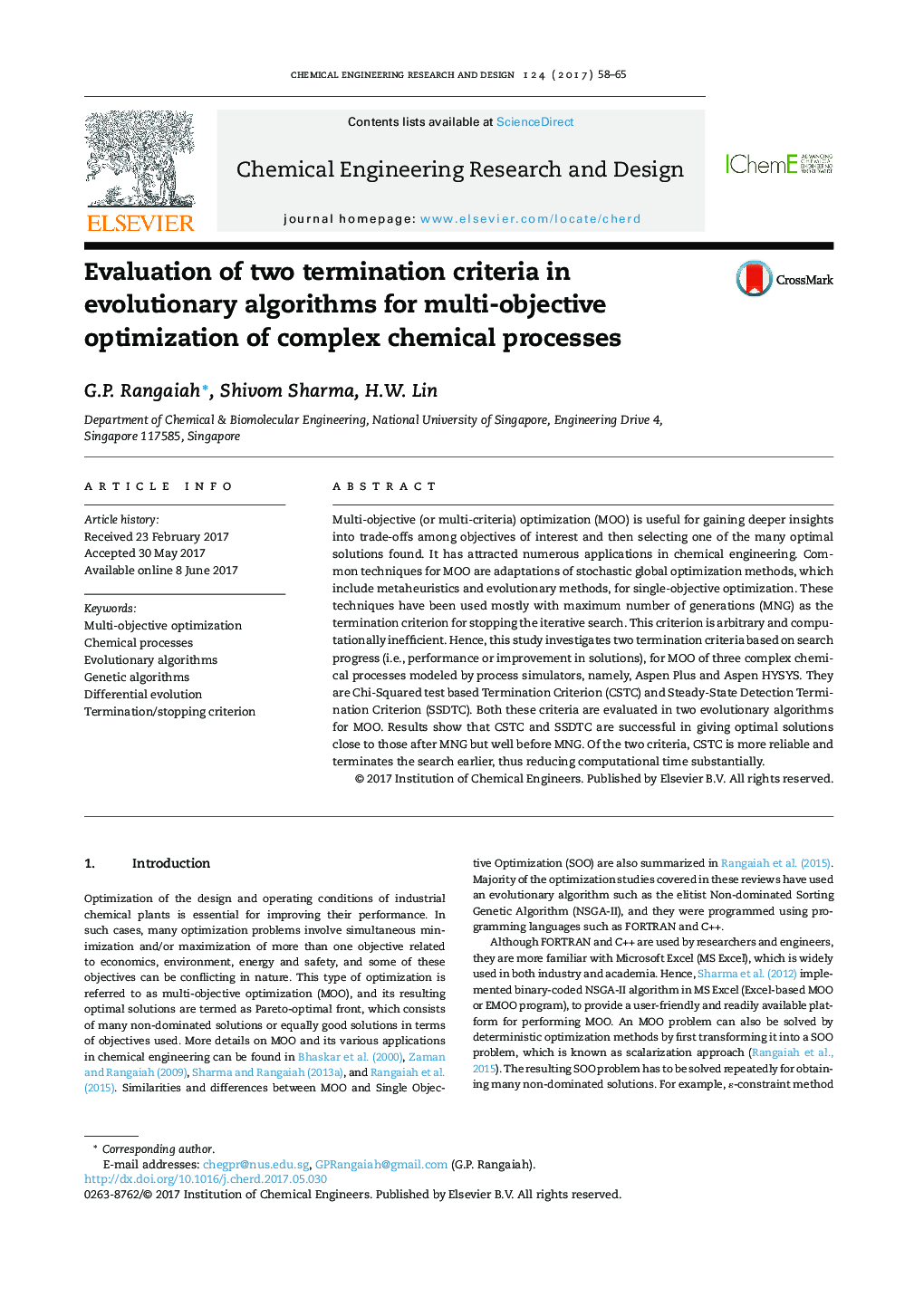| Article ID | Journal | Published Year | Pages | File Type |
|---|---|---|---|---|
| 4987200 | Chemical Engineering Research and Design | 2017 | 8 Pages |
Abstract
Multi-objective (or multi-criteria) optimization (MOO) is useful for gaining deeper insights into trade-offs among objectives of interest and then selecting one of the many optimal solutions found. It has attracted numerous applications in chemical engineering. Common techniques for MOO are adaptations of stochastic global optimization methods, which include metaheuristics and evolutionary methods, for single-objective optimization. These techniques have been used mostly with maximum number of generations (MNG) as the termination criterion for stopping the iterative search. This criterion is arbitrary and computationally inefficient. Hence, this study investigates two termination criteria based on search progress (i.e., performance or improvement in solutions), for MOO of three complex chemical processes modeled by process simulators, namely, Aspen Plus and Aspen HYSYS. They are Chi-Squared test based Termination Criterion (CSTC) and Steady-State Detection Termination Criterion (SSDTC). Both these criteria are evaluated in two evolutionary algorithms for MOO. Results show that CSTC and SSDTC are successful in giving optimal solutions close to those after MNG but well before MNG. Of the two criteria, CSTC is more reliable and terminates the search earlier, thus reducing computational time substantially.
Keywords
Related Topics
Physical Sciences and Engineering
Chemical Engineering
Filtration and Separation
Authors
G.P. Rangaiah, Shivom Sharma, H.W. Lin,
